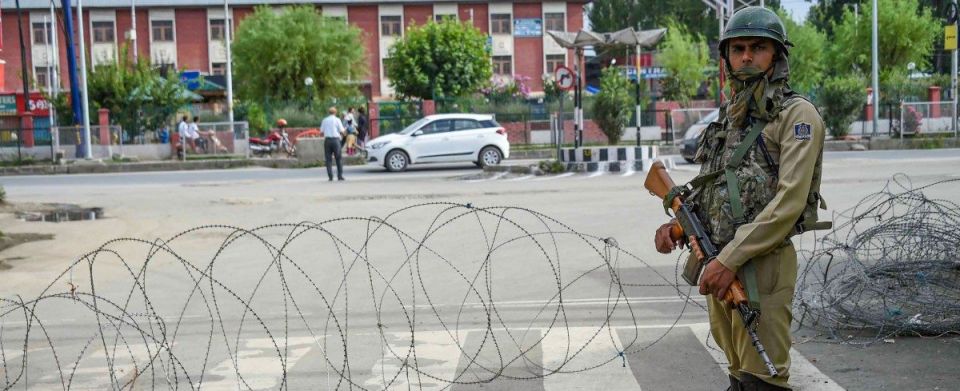The Legal Subversions That Helped the Centre Undercut J&K's Powers

Apart from Article 370, the president’s order on Jammu and Kashmir also amended Article 367, changing the substantive character of an important provision, besides abolishing the entire constitution of the (soon to be former) state.
Article 370 was put in place to preserve the autonomy of Jammu and Kashmir, leaving the decision-making powers with the state’s constituent assembly. Under Articles 370(1)(b) and 370(1)(d), the power of parliament is limited to areas that were listed in the Instrument of Accession. As per Art 370(3), the recommendation of the state’s constituent assembly is required before the president modifies or makes a declaration that the article will be inoperative.
The presidential order claims that it was promulgated “in exercise of powers conferred by clause (1) of Article 370, the President with concurrence of the Government of State of Jammu & Kashmir”. The concurrence of Jammu and Kashmir is a legal fiction generated by the amendment to Article 367, to equate an absent legislative assembly with the constituent assembly. What cannot be amended even with a two-thirds majority in parliament and ratification by 50% assemblies was done by the presidential order.
The president’s order has amended Article 367, which is basically an interpretation clause of the constitution of India. After this presidential amendment, Article 367 declares that “the expression ‘Constituent Assembly of the State…’ in Article 370 (3) shall be read to mean ‘Legislative Assembly of the State’”. If this interpretation is taken further, the parliament today may be considered as the constituent assembly.
Not having a constituent assembly for Jammu and Kashmir is a major impediment in changing the provisions in Article 370. The constituent assembly is specifically aimed at drafting the constitution for J&K. After approving the constitution, the CA disbanded itself in 1957. Before dissolving itself, the CA finalised some changes and facilitated even the abrogation of Article 370.
But it is subject to the recommendation of constituent assembly of J&K. This means if the Union wants to alter the constitutional relationship between the J&K and rest of India, they should first constitute a constituent assembly for the state in accordance with the norms and then seek its recommendation.
This is not a mere procedural aspect but a substantive requirement for altering the ‘constitution’ of a state. The legislative assembly of a state or parliament at the Centre is basically representative in character, which is endowed with the power of amending the constitution. It must act within the sphere and scope determined by the constitution of the nation.
It can amend but cannot rewrite the entire constitution or abrogate it completely. The constituent assembly alone can have the required sovereign authority to draft a new constitution in place of the earlier. The difference between the legislative house and the constituent assembly is that the first has to exercise its powers as per the constitution, while the latter develops the constitution.
 Parliament building. Photo: PTI
Parliament building. Photo: PTI
Both are not same, though appear to exercise legislative functions. Madhav Khosla, a junior fellow at the Harvard Society of Fellows further expanded on this, saying, “Indeed, it is precisely this distinction that is at the heart of India’s basic structure doctrine that prevents certain constitutional amendments on the ground that Parliament, which exercises representative authority, is limited and cannot create a new constitution and thereby exercise sovereign authority.”
Expansion of legal fiction
This executive order notified through the president’s office has created huge legal fiction with the following components:
- The legislative assembly of J&K is deemed to be the constituent assembly of J&K.
- Consultation with the legislative assembly is deemed to be the consultation with constituent assembly.
- Since the legislative assembly of J&K is dissolved, the governor of J&K is deemed to be the representative of the legislative assembly of J&K (which is deemed to be its constituent assembly).
- Hence, the consultation with or recommendation of (if any) the governor is deemed to be the consent of the constituent assembly to abrogate the constitution of J&K and also deemed to be its recommendation to bring about the changes in Article 370 to make the entire constitution of India applicable to the state.
- Another major extension of this so-called logic of legal fiction is that the requirement mandated by Article 3 that altering the shape of a state should be done only after referring the bill for views of the state assembly, has been presumed to have been done, because the governor was consulted.
Going further back, the Bharatiya Janata Party’s support to the People’s Democratic Party to form the government after elections, its subsequent withdrawal of support from the PDF-led government and imposition of president’s rule after the dissolution of the state assembly have created a situation wherein people’s representation is absent.
When there is no constituent assembly of J&K, and no legislative assembly, whom did the president consult before changing Article 370? Can a governor assume the authority of a legislative assembly and get into the shoes of the constituent assembly to remove the entire constitution of Jammu and Kashmir?
When the governor represents the state
The governor, being an appointee of the Centre as a formal head of the state, reports to the Centre under the constitutional framework, and is hardly a representative of the state. Especially during Centre’s rule, he is a temporary ruler until a representative government is constituted.
During president’s rule, the parliament legislates for the state as a stop-gap arrangement to meet the exigencies of the budget. But parliament cannot replace the state assembly for all aspects of governance. How can a governor, being a centre’s appointee, assume the powers of the constituent assembly and amend the constitutional structure of Jammu and Kashmir?
 Youths walk along a road near Lal Chowk during curfew like restrictions on the 12th consecutive day in Srinagar on August 16, 2019. Photo: PTI
Youths walk along a road near Lal Chowk during curfew like restrictions on the 12th consecutive day in Srinagar on August 16, 2019. Photo: PTI
Making a dead assembly equal to the constituent assembly through an executive order is unthinkable. It is surprising that such a major flaw is being passed on as a historic change. This order usurps the power of parliament, as the constitutional provisions of the amendment were not followed when grabbing the power of the constituent assembly of J&K and the legislative assembly.
In amending Article 367 as well, the Union drew its authority from Article 370(1). This is an amendment of the substantial provision of the constitution itself, which could be done only under article 368 requiring a two-thirds majority of parliament present and voting besides the ratification by 50% of state assemblies.
The state of J&K started off as a state with a special status through accession in the capacity of an independent state to its present annexation as a union territory without involving the people of J&K or their representatives. Next elections, if held as promised, will be for an assembly of the UT with neither the special status nor statehood of J&K. The elected representatives will have no power to pass even a single piece of legislation without the approval of the lieutenant governor and administrator.
Source: https://thewire.in/law/article-370-jammu-kashmir-constituent-assembly





























































Comments
Test name February 19, 2016 Reply
There are many variations of passages of Lorem Ipsum available, but the majority have suffered alteration in some form, by injected humour, or randomised words which don't look even slightly believable. If you are going to use a passage of Lorem Ipsum, you need to be sure there isn't anything embarrassing hidden in the middle of text.
Test name February 19, 2016
Lorem ipsum dolor sit amet, consectetur adipiscing elit, sed do eiusmod tempor incididunt ut labore et dolore magna aliqua.
Test name February 19, 2016Reply
Lorem ipsum dolor sit amet, consectetur adipiscing elit, sed do eiusmod tempor incididunt ut labore et dolore magna aliqua. Lorem ipsum dolor sit amet, consectetur adipiscing elit, sed do eiusmod tempor incididunt ut labore et dolore magna aliqua.